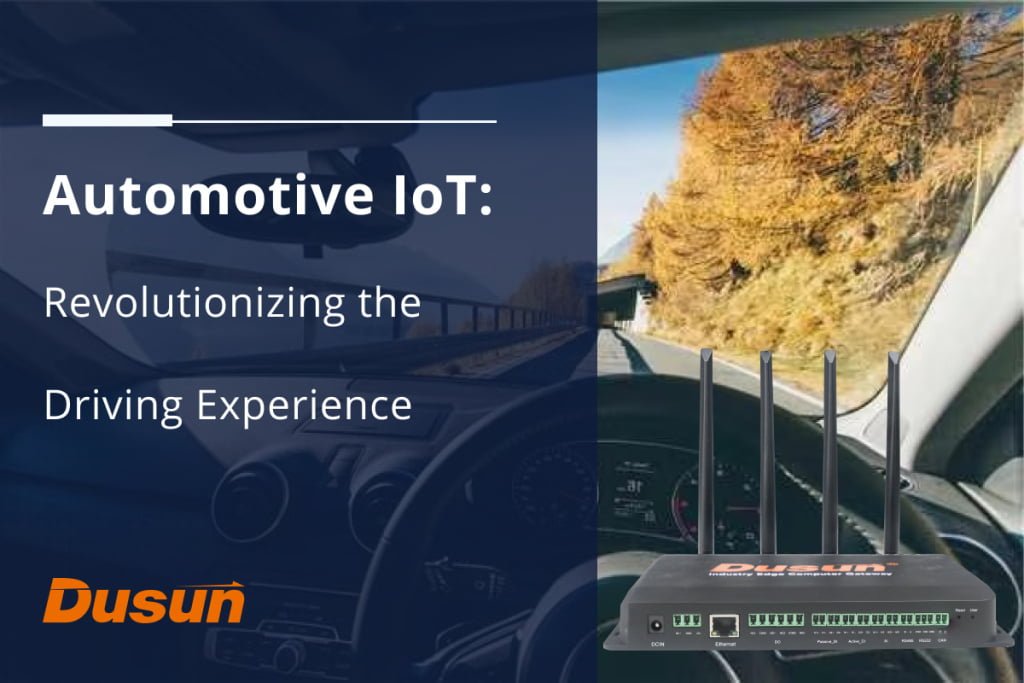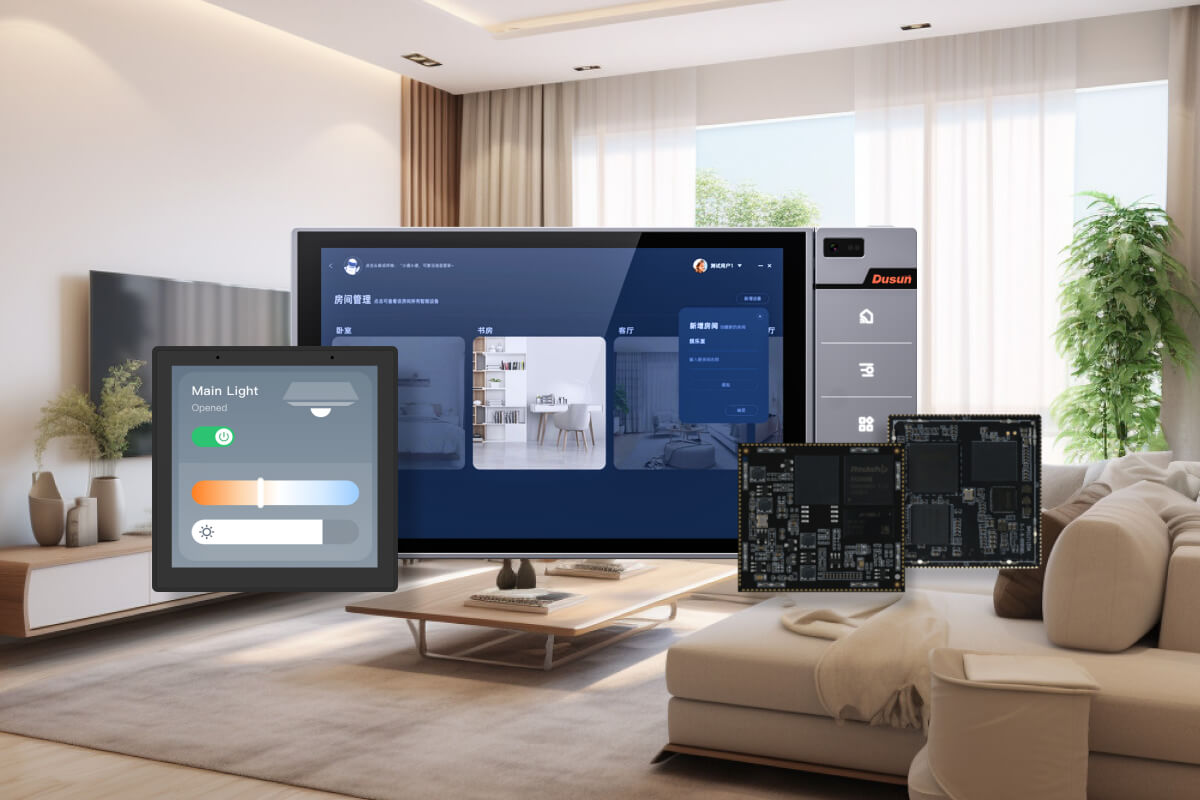Automotive IoT improves vehicle driving systems and related functions by integrating IoT gateways as well as sensors, telematics units, on-board diagnostic equipment, connected infotainment systems, and car networking communication equipment.
This article covers the definition of automotive IoT, the equipment involved, collaboration with IoT gateways, applications, benefits, and communication interfaces. It also recommends suitable communication interfaces for numerous components of vehicles.

What is automotive IoT?
Automotive IoT integrates Internet of Things (IoT) technologies in the automotive industry, connecting vehicles to the internet and enabling communication between vehicles, drivers, and various external systems. This integration allows for the exchange of data and information, enabling new functionalities and services and improving overall efficiency and safety.
Automotive IoT Equipment
Automotive IoT equipment refers to the hardware and devices enabling connectivity, data exchange, and vehicle communication. Here are some examples of automotive IoT equipment:
Telematics Units
Telematics units are small devices (GPS receivers, accelerometers, etc.) installed in vehicles that collect and transmit data on vehicle performance, location, and driver behavior.
On-Board Diagnostics (OBD) Devices
OBD devices plug into the OBD-II port in a vehicle, which is available in most modern cars. These devices gather diagnostic data from the vehicle’s electronic systems and transmit it wirelessly to a connected device or a cloud-based platform.
Connected Infotainment Systems
Infotainment systems, connected with internet, provides features such as multimedia streaming, navigation, smartphone integration, and access to online services.
Vehicle-to-Everything (V2X) Communication Devices
V2X devices assist the interaction of vehicles and various elements of the transportation ecosystem, including other vehicles (V2V), infrastructure (V2I), pedestrians (V2P), and the cloud (V2C).
Sensors and Actuators
Various smart sensors and actuators are employed in automotive IoT systems to gather data and enable automated actions. It includes GPS, accelerometers, temperature, pressure, cameras, LiDAR, radar, and ultrasonic sensors. Actuators control functions such as automatic braking, steering, and throttle.
IoT Gateway
An IoT gateway is a device that connects vehicles and the wider IoT ecosystem. It is an intermediary, facilitating communication and data exchange between the vehicle’s internal systems and external networks or cloud-based platforms. The IoT gateway is crucial in enabling connectivity, data collection, and integration of various IoT services and applications in the automotive industry.
Recommend Reading: Why Bluetooth Gateways Are Ideal for Some V2X Vehicle IoT Applications
How Do Automotive Equipment and IoT Gateways Work Together?
The automotive IoT equipment collaborates with an IoT gateway to enable connectivity within the vehicle and with external networks. The automotive equipment collects data from various sensors and transmits it to the gateway. The IoT gateway performs protocol translation, data aggregation, connectivity management, and security measures.
It then sends the processed vehicle’s data to cloud-based platforms or external systems for further analysis. Data analysis provides insights for real-time location monitoring and predictive vehicle maintenance. Feedback and actions based on the analysis are sent back to the IoT gateway and the automotive IoT equipment, enabling autonomous lane adjustments, emergency braking, and other improvements.
This collaboration facilitates enhanced functionality, efficiency, and the development of innovative applications like self-driving cars, blockchain-based V2V communication, and other services in the automotive industry.
Automotive IoT Application
Automotive IoT offers numerous benefits across various aspects of the automotive industry. Some of the key applications are briefly discussed below.
Fleet Management and Optimization
IoT gateways enable secure communication between vehicles and cloud-based fleet management platforms, allowing real-time tracking, data aggregation, and optimized fleet management. This leads to reduced costs, improved maintenance, and enhanced logistics management.
Remote Vehicle Monitoring and Maintenance
Automotive IoT gateways and devices facilitate continuous vehicle health and performance monitoring. Real-time data on engine status, mileage, tire pressure, battery health, and other parameters enable remote diagnostics, preventive maintenance, and timely repairs. It reduces the risk of breakdowns, minimizes downtime, and extends the lifespan of vehicles.
Predictive Analytics for Quality Control and Performance Optimization
Advanced artificial intelligence and IoT gateways work together in the automotive industry to predict potential vehicle issues by analyzing sensor data and optimizing quality control processes. Manufacturers can detect anomalies, improve product reliability, and proactively address manufacturing defects or malfunctions. Predictive analytics also lead to improved fuel efficiency, performance, and overall reliability of vehicles.
Personalized Customer Experiences and Connected Services
Automotive IoT allows for personalized customer experiences and connected services within vehicles. IoT gateways provide the connectivity and interoperability necessary to seamlessly integrate vehicles with various customer-centric services, enabling customized experiences such as remote lock/unlock, climate control, in-car entertainment, and smart home integration.

Benefits of Automotive IoT
Automotive IoT offers several benefits for equipment manufacturers in the automotive industry. Here are some key advantages:
Enhanced Product Development
Vehicles generate vast data on various parameters such as performance, usage patterns, and user preferences. Equipment manufacturers can use IoT gateways to transmit this data over the cloud and leverage this data to gain insights into customer needs, identify areas for vehicle improvement, and develop more advanced and tailored automotive IoT solutions.
Improved Product Performance and Quality
IoT connectivity enables real-time monitoring of automotive equipment performance and condition. IoT gateways allow manufacturers to collect data on key vehicle parameters, detect drive anomalies, and proactively address fatal issues. It leads to improved product quality, reduced warranty costs, clear insurance issues, and enhanced driver satisfaction.
Remote Diagnostics and Maintenance
IoT gateway facilitates remote vehicle diagnostics and maintenance capabilities. Manufacturers can remotely access automotive equipment data, diagnose fault codes, and provide remote troubleshooting assistance.
Supply Chain Optimization
IoT gateway enables manufacturers to gather real-time data on the status and location of equipment throughout the supply chain. It improves inventory management, reduces lead times, and enhances supply chain visibility. Manufacturers can optimize logistics, streamline operations, and ensure timely delivery of equipment to customers.
Communication Interfaces for Automotive IoT
The specific communication standards used in automotive IoT can vary depending on the application, vehicle manufacturer, and regional regulations. Additionally, newer technologies and protocols emerge as the automotive industry evolves. The top 10 communication interfaces for Automotive IoT are available below.
- Controller Area Network (CAN)
- CAN-FD
- Ethernet
- Automotive Ethernet (100BASE-T1, 1000BASE-T1)
- Dedicated Short-Range Communication (DSRC)
- Bluetooth
- Wi-Fi
- Cellular (4G, 5G)
- Zigbee 3.0
- FlexRay
Use Cases
A vehicle comprises many integrated systems and features; each requires a specific protocol for working and communicating with other vehicle devices. The critical automotive components and the recommended communication interfaces suitable for each case are available below.
Telematics and Vehicle Tracking
Cellular networks provide wide coverage and reliable connectivity, making them ideal for real-time vehicle tracking, remote diagnostics, and fleet management applications that require continuous communication over large distances.
Vehicle-to-Vehicle (V2V) Communication
DSRC is specifically designed for V2V and Vehicle-to-Infrastructure (V2I) communication, enabling critical safety features like collision avoidance and cooperative driving. It’s low latency and high-reliability characteristics enable critical safety features like collision avoidance and cooperative driving, where quick and accurate data exchange is essential.
Advanced Driver Assistance Systems (ADAS)
High-speed and reliable interfaces like Ethernet and CAN-FD are well-suited for connecting ADAS sensors, cameras, and control units. These protocols provide the bandwidth and data synchronization capabilities necessary for efficiently transmitting large amounts of data, ensuring real-time responsiveness and accurate decision-making in ADAS applications.
In-Vehicle Infotainment
Bluetooth and Wi-Fi are suitable for connecting smartphones, tablets, and other portable devices to the vehicle’s infotainment system. These wireless protocols offer convenient and seamless connectivity, allowing passengers to stream media, access apps, and control the infotainment system from their devices.
Home Automation Integration
Zigbee is suitable for integrating vehicles into home automation systems. It provides low-power consumption, interoperability, and mesh networking capabilities, allowing vehicles to connect and interact with smart home devices. This enables remote access, lock/unlock functionality and integration with other home automation systems.
SoC Technology in Automotive IoT
SoC (System-on-Chip) technology is crucial in Automotive IoT (AIoT) applications. It offers integration and space efficiency by consolidating multiple functions onto a single chip in the vehicle’s ECU. SoC provides high-performance computing, supporting complex algorithms and tasks required for AIoT applications. SoCs also incorporate communication interfaces for seamless, secure connectivity within the automotive IoT ecosystem.
SoCs serve as a compact, efficient, and powerful platform for integrating functionalities and communication interfaces in vehicles, enabling the development of advanced AIoT applications that enhance vehicle connectivity, safety, and user experience.
Automotive IoT FAQs
They should focus on enhancing passenger safety, optimizing fleet management, improving customer experience, highlighting cost savings and efficiency, leveraging data analytics and insights, and partnership opportunities for customization and support. By addressing these key points, manufacturers can effectively demonstrate the value and benefits of their IoT solutions to ride-sharing companies.
Automotive IoT offers numerous benefits to domestic vehicle owners. These include enhanced safety through real-time monitoring and alerts, optimized maintenance schedules to prevent breakdowns, improved fuel efficiency for cost savings, remote control and monitoring capabilities via mobile apps, connectivity features for entertainment and convenience, potential insurance benefits through usage-based plans, and integration with smart home systems.



















